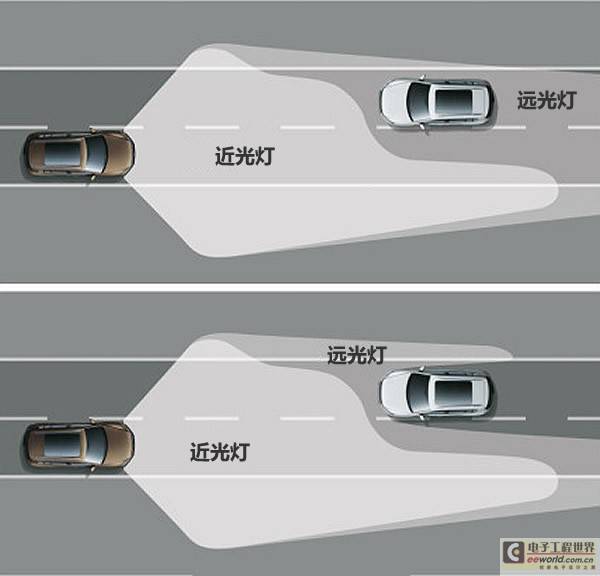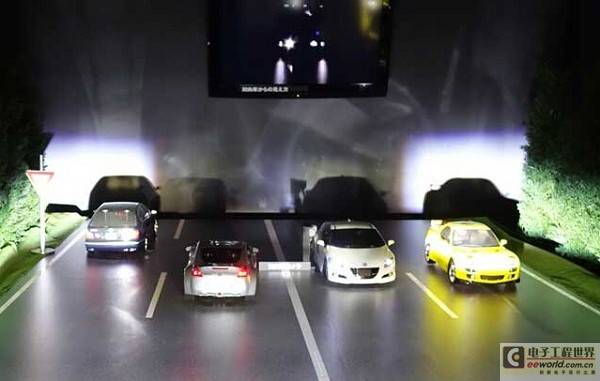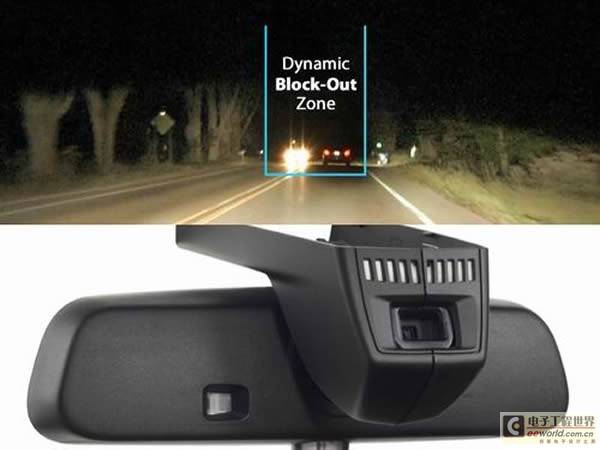It started to rain near dusk, and the vehicles and pedestrians on the road gradually merged into the surrounding scenery. As the natural light gradually weakened, the road surface became increasingly blurred. Vehicles on the road began to turn on their headlights, although it was futile. The faint light was drowned in the surrounding environment the moment it was emitted by the headlights. Turning on the headlights at this time was just a reminder to the oncoming vehicles. It was not until the sky was completely dark that the headlights could emit a pleasing light in the completely dark environment.
The lights on the road began to become dotted. At this time, a dazzling light suddenly pierced from the opposite lane, dazzling enough to blind people instantly - the driver on the opposite side forgot to turn off the high beam. Next, we will do this: slow down and check whether our high beam is turned off. If it is turned off, we will quickly turn on the high beam and pierce the other side. If the other side still does not move at this time, then the high beam will accompany the entire process of the car...
Therefore, we need intelligent high beam.
Development: From mechanical to electronically controlled
Intelligent high beams were first put into mass production in 2004. To be more precise, they are headlight assist technologies based on camera systems. The original intelligent high beams worked like this: when the light was dim enough and there were no lights of other vehicles nearby, the system automatically turned on the high beams. When the system detected the headlights of the opposite lane and the taillights of the same lane, the system automatically switched from high beams to low beams.

Volkswagen Tiguan DLA Intelligent High Beam
With the gradual development and improvement of hardware facilities, the intelligent high beam system eliminates the process of changing lights, and the high beam can be kept in a normal state. Through the cooperation of the new generation of headlight hardware, the intelligent high beam can fix the illumination area of the headlights to the area around the oncoming vehicle or the vehicle in front, that is, the oncoming vehicle or the vehicle in front is placed in the shadow area specially set up by the headlights, forming a glare-free environment.
In recent years, LED light sources have tended to replace xenon headlights. With the support of LED light sources, intelligent high beams have been further upgraded. They no longer require special mechanical structure support, but instead achieve a glare-free environment by turning off local LED light sources. The conversion of light sources is also more flexible.
Not long ago, the Robotics Institute of Carnegie Mellon University announced a smart high beam that it is developing. It uses a digital light processing (DLP) searchlight to replace standard headlights or LED clusters. The light is dispersed into 1 million small beams, each of which can be independently controlled by an onboard computer, so as to achieve the core problem of controlling the high beam to the eyes of oncoming drivers and the dazzling of drivers in rainy and snowy weather.
From the above development history, we can see that the fundamental purpose of intelligent high beam is to prevent glare to oncoming drivers. After experiencing the most primitive and simple switching of high and low beam, intelligence has begun to develop from mechanical to electronic control.
Structure: How various intelligences work
As its name suggests, intelligent high beam is a headlight auxiliary technology based on the camera system. Then, the camera system is the key part of the whole system. The camera integrated on the rearview mirror or directly fixed on the windshield collects road information, and then recognizes the light through the built-in logic operation program and automatically controls the light source.
The current mechanical intelligent high beam is to add a small trapezoidal baffle in front of the headlight light source. By raising and lowering the small baffle, a small shadow is formed in the illumination area of the light source. This principle is very similar to the shadow play. The role of the camera in this process is to collect the relative position, movement speed and other required information of the opposite vehicle or the vehicle in front. The processor calculates the vehicle position based on this information, and then fixes and adjusts the position of the baffle through the actuator. This technology is now installed in many high-end European models, such as the DLA intelligent high beam of Tiguan, the FAHB fully intelligent active high beam of Volvo, etc.
Not long ago, at the "CEATEC JAPAN 2014" held at the Makuhari Messe Exhibition Center in Chiba City, Stanley Electric Co., Ltd. of Japan demonstrated an intelligent high beam system based on LED light sources, and named it "AdaptiveDriving Beam" (ADB). Different from the mechanical type, the actuator of ADB realizes the formation of a glare-free area by turning off some LED light sources.

Stanley Electric showcases ADB smart high beam
The light source of ADB is composed of 12 LED chips, which are divided into four areas. The opening and closing of the lights in the four areas are independently controlled. Thus, a glare-free area is formed in the area and direction where the vehicle in front or oncoming vehicles is located. The light distribution of the left and right lights is combined to produce a total of 8 illumination modes.
Intelligence: The key lies in sensors and control logic
There are two key points that determine the intelligence level of smart high beams. The first is whether the sensor that collects information can complete its work in a timely and accurate manner; the second is the rationality of the computer control logic. Of these two points, the most difficult to break through is the sensor. Regardless of the structure of the system, smart high beams cannot be separated from the support of cameras. In other words, in this system, the camera plays the role of a sensor. So, with thousands of sensors, why use a camera?
Before we talk about this issue, let's first determine what information the intelligent high beam needs to collect. The first is lane information. In this regard, the intelligent high beam can share the probe with the lane keeping system. The second is relative distance. The third is light intensity. It can be seen that the sensors of the intelligent high beam mainly need to collect object images, detection distance and light sensitivity.

Camera integrated into the rear view mirror
At present, the sensor types of intelligent vehicle assistance systems are generally divided into laser radar, ordinary radar and high-resolution video cameras. Laser radar is good at outlining the shape of objects, but it is not sensitive to background light, not to mention that laser radar is very expensive. Ordinary radar can work normally in low visibility and lighting conditions if the frequency, waveform and signal receiver are selected well. However, ordinary radar cannot recognize objects. So, it seems that the camera is the best choice.
However, the distance detection of the camera is based on parallax distance information, which is much less accurate than radar detection. However, this data is sufficient for intelligent high beam. As for the light sensitivity requirement, the CMOS sensor in the camera is originally used for this job.
summary:
According to statistics, more than 30% of nighttime traffic accidents are caused by the misuse of high beams, and high beams have become a weapon used by drivers to fight and show off their anger. If smart high beam technology is popularized, it will greatly reduce the rate of nighttime traffic accidents.
At present, intelligent high beam is only a configuration for luxury cars. The cost of cameras and actuators in headlights has always been the key to its popularization. However, with the gradual popularization of LED headlights, the actuators are simplified by controlling the on and off of the light source, and the cost is reduced. I believe that in the near future, this technology will be used more and more.
Previous article:Touch-screen streamlined car center console may subvert traditional design
Next article:Motor drive solution and application design points for automotive adaptive front lighting system (AFS)
- Popular Resources
- Popular amplifiers
- A new chapter in Great Wall Motors R&D: solid-state battery technology leads the future
- Naxin Micro provides full-scenario GaN driver IC solutions
- Interpreting Huawei’s new solid-state battery patent, will it challenge CATL in 2030?
- Are pure electric/plug-in hybrid vehicles going crazy? A Chinese company has launched the world's first -40℃ dischargeable hybrid battery that is not afraid of cold
- How much do you know about intelligent driving domain control: low-end and mid-end models are accelerating their introduction, with integrated driving and parking solutions accounting for the majority
- Foresight Launches Six Advanced Stereo Sensor Suite to Revolutionize Industrial and Automotive 3D Perception
- OPTIMA launches new ORANGETOP QH6 lithium battery to adapt to extreme temperature conditions
- Allegro MicroSystems Introduces Advanced Magnetic and Inductive Position Sensing Solutions
- TDK launches second generation 6-axis IMU for automotive safety applications
- LED chemical incompatibility test to see which chemicals LEDs can be used with
- Application of ARM9 hardware coprocessor on WinCE embedded motherboard
- What are the key points for selecting rotor flowmeter?
- LM317 high power charger circuit
- A brief analysis of Embest's application and development of embedded medical devices
- Single-phase RC protection circuit
- stm32 PVD programmable voltage monitor
- Introduction and measurement of edge trigger and level trigger of 51 single chip microcomputer
- Improved design of Linux system software shell protection technology
- What to do if the ABB robot protection device stops
- Analysis of the application of several common contact parts in high-voltage connectors of new energy vehicles
- Wiring harness durability test and contact voltage drop test method
- From probes to power supplies, Tektronix is leading the way in comprehensive innovation in power electronics testing
- From probes to power supplies, Tektronix is leading the way in comprehensive innovation in power electronics testing
- Sn-doped CuO nanostructure-based ethanol gas sensor for real-time drunk driving detection in vehicles
- Design considerations for automotive battery wiring harness
- Do you know all the various motors commonly used in automotive electronics?
- What are the functions of the Internet of Vehicles? What are the uses and benefits of the Internet of Vehicles?
- Power Inverter - A critical safety system for electric vehicles
- Analysis of the information security mechanism of AUTOSAR, the automotive embedded software framework
- The STM8S003F3P6 chip is very interesting
- 【Wireless closed-loop feedback system for desktop robotic arms】
- 8/21-22@Wuhan! Intel/World Peace Group invites you to participate in the Artificial Intelligence Technology Introduction and Implementation Seminar
- Professor Li Xia: How basic should basic research be?
- 【i.MX6ULL】Driver Development 11——LCD Driver Practice
- Microcontroller interview question collection
- HEF4051 is easy to damage
- Microchip Automotive Innovation Series Online Seminar Invites You to Attend!
- [STM32WB55 review]——by damiaa
- 【DIY Creative LED】WS2812 test successful

 LM6132MDC
LM6132MDC











 京公网安备 11010802033920号
京公网安备 11010802033920号